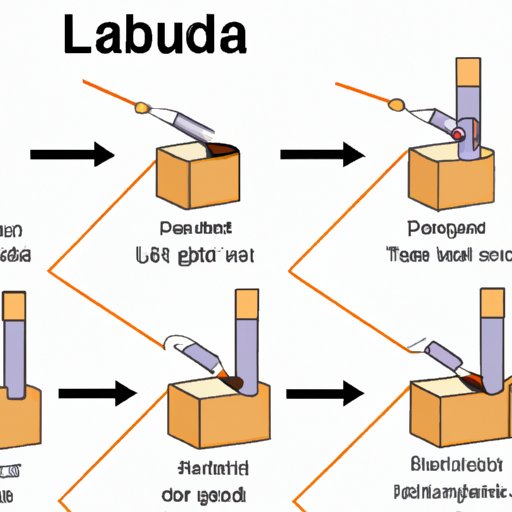Introduction
Latuda (lurasidone hydrochloride) is an atypical antipsychotic medication used to treat schizophrenia and bipolar disorder. It works by altering the balance of certain chemicals in the brain known as neurotransmitters. By doing so, it is believed that Latuda can help reduce symptoms of these mental health conditions.
Explanation of Latuda’s Active Ingredient, Lurasidone Hydrochloride
Latuda contains the active ingredient lurasidone hydrochloride, which is a type of drug known as an atypical antipsychotic. It is chemically similar to other antipsychotics such as risperidone, olanzapine, and quetiapine. Lurasidone hydrochloride works by blocking certain receptors in the brain that are involved in the transmission of certain chemical messengers, or neurotransmitters.
Overview of Latuda’s Mechanism of Action
Latuda affects the levels of two main neurotransmitters: dopamine and serotonin. By blocking certain receptors in the brain, Latuda reduces the amount of dopamine and serotonin available in the brain. This helps to control the symptoms of schizophrenia and bipolar disorder.
Latuda begins to work within one hour of taking it, but it may take up to four weeks before its full effects are felt. During this time, it is important to keep taking Latuda as prescribed and to monitor any changes in mood or behavior.

Clinical Research on the Efficacy of Latuda
Clinical studies have shown that Latuda is effective in treating the symptoms of schizophrenia and bipolar disorder. In a study published in the American Journal of Psychiatry, adults with schizophrenia who took Latuda experienced significant improvement in their symptoms compared to those who did not take Latuda.
The most common side effects reported in the study included nausea, restlessness, and insomnia. While these side effects were generally mild and did not last long, they may be more severe in some people. Additionally, there are potential risks associated with taking Latuda, including increased risk of suicidal thoughts and behaviors.

Side Effects Associated with Taking Latuda
Common side effects associated with taking Latuda include nausea, restlessness, insomnia, dizziness, dry mouth, and constipation. These side effects usually go away after a few days or weeks, but if they persist, you should contact your doctor. Serious side effects, such as an increased risk of suicidal thoughts and behaviors, have also been reported.
Tips for Successful Use of Latuda
To get the most out of taking Latuda, it is important to follow your doctor’s instructions. Additionally, it is important to monitor any changes in your mood or behavior, as well as any side effects you may experience. Finally, it is important to communicate regularly with your doctor about how you are feeling while taking Latuda.
Conclusion
Latuda is an atypical antipsychotic medication used to treat schizophrenia and bipolar disorder. It works by blocking certain receptors in the brain that are involved in the transmission of certain chemical messengers, or neurotransmitters. Clinical studies have shown that Latuda is effective in treating the symptoms of these mental health conditions, although there are potential risks associated with taking it. To get the most out of taking Latuda, it is important to follow your doctor’s instructions, monitor any changes in your mood or behavior, and communicate regularly with your doctor about how you are feeling.
(Note: Is this article not meeting your expectations? Do you have knowledge or insights to share? Unlock new opportunities and expand your reach by joining our authors team. Click Registration to join us and share your expertise with our readers.)
